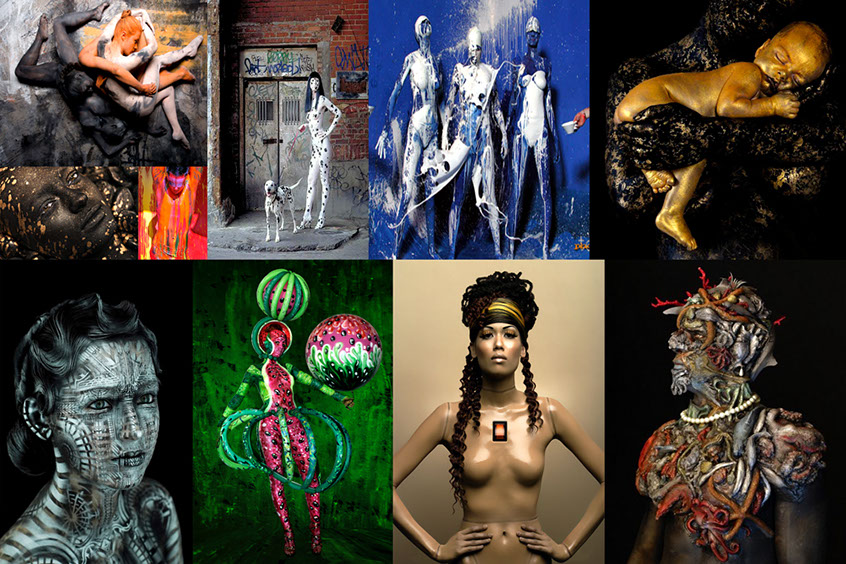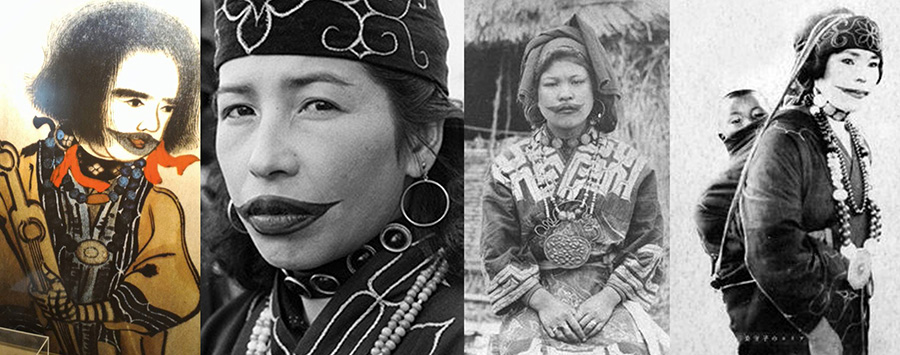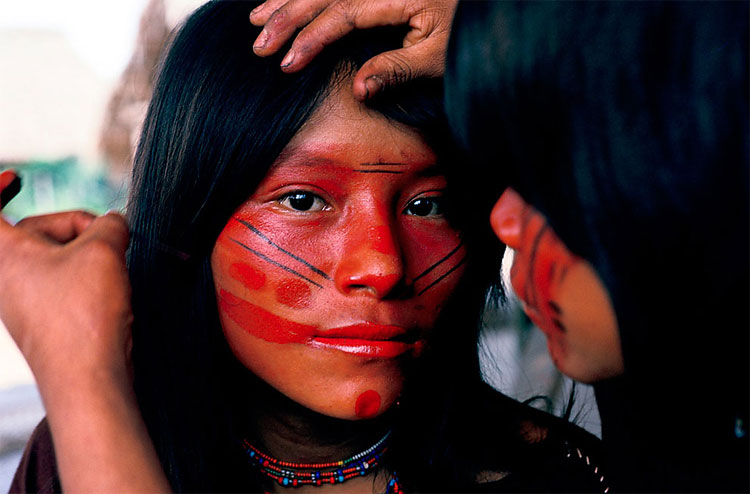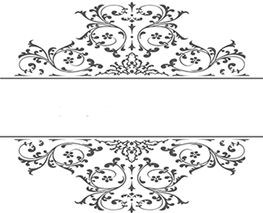Body Art & Body Painting History









Part 1-Ritual, traditional body art
Part 2- 1950-1980- The birth of a new art form
Part 3-Contemporary body painting (after 1980)
Traditional body art in China
Ainu, Japan
Ashinika
Traditional body art in China
Theyyam, Malabar, Kerala, India
Shehio, traditional body art in China
2 - 9
<
>
Body Art & Body Painting History
Every major society has had at least one body art tradition. There are so many ways to be human, and many different views of beauty. Sometimes, the marks of identity can be disturbing to others, but they have a very deep meaning.
There are so many ways to be human. How we decorate our bodies tells others who we are as individuals. Around the world, many people use their skin as living canvas, representing past experiences, bravery, status, beauty, protection, fertility, magic, transformations and connections with other realms.
Other symbols protect from evil eyes and spirits, bring fertility, heal the body, grant magical powers, or support transformations and their connection with other realms. The line between reality and illusion, god and man, good and evil, the Earth and beyond, life and death, present, past, and future, becomes blurred. Often times, the people involved in a body art expression are not just playing a role; they are becoming the role, the night, the day, the spirit, the god, the transformation, which could heal them, or help others, as in the cases of creating sacred pain and sacrificing the own flesh in the name of the community.
These incredible kinds of expression, performance and belonging exist in two parallel worlds, one of old rituals and traditions that distinguish us as human, and the other of body art as a contemporary art form.
“A man without tattoos is invisible to the gods,” says an Iban proverb from Borneo.
Body painting, or sometimes bodypainting, is a form of body art. Body art is art made on, with, or consisting of, the human body:
body painting, tattoos, body art performances, body piercings, scarification, branding, scalpelling, full body tattoo.
Unlike tattoo and other forms of permanent body art, body painting is temporary, painted onto the human skin, and lasts for one day, or at most (in the case of Mehndi, "henna" or temp tattoo, glitter tattoos) a couple of weeks. Body painting that is limited to the face is known as face painting.
Body art is also a sub-category of performance art, in which artists use or abuse their own body to make their particular statements.
My research on the body art history started in 2005. I have collected enormous amount of information, photos, and videos. China, South Korea, India, Brazil, Venezuela, Thailand, Australia were a few of the countries my field research took place. My goal is to visit more places and in the best possible case to live for a few months with tribes still practicing these old traditions, such as those in Papua New Guinea, South America and Australia. I am working on a book, and this is the reason why for now I am not able to share more information or images.
How many unknown traditions are waiting to be discovered, or presented to a bigger audience? The human civilization has been always dreaming to reach the stars, but we are not even aware of all the cultural treasures still hiding on our planet. Many of these magical traditions are disappearing. A few are already extinct. Some are beautiful, some otherworldly, others scary, but they all are inherently human cultural heritage. They are a very important part of our story in terms of art history, gender studies, ritual culture, social development, world view, even understanding of time and space. They need to be kept alive at the very least through preserving documentation.
In western cultures there are very few rites of passages. In the tribal world the initiation is a main part of the social structures.
Bella Volen has separated the visual development of Body Art and Body Painting in 3 parts.
Part 1-Ritual body art
Every major society, past or present, has or had it’s own body art culture.
Rituals are a universal constant in human society. Beginning with the start of human cultural development, rituals have continued to have space in society, even in the modern world.
There is no shortage of research on rituals, and theories regarding their nature.
In all cultures, rituals coincide with large turning points of life in regard to the individual (birth, puberty, marriage, death).
North & South America, Africa, Australia, New Zealand, Polynesia, Papua New Guinea, Melanesia, Oceania, India, Middle East, China, Japan, Thailand, Bulgaria, Kosovo and more
Body painting with clay and other natural pigments existed in most if not all tribal cultures. Often worn during ceremonies, this ancient form of expression is still used among many indigenous people of the world today. (Australia, New Zealand, the Pacific islands, parts of Africa, India, Japan and more.)
Other ritual-based art forms include tattoos, piercing, nose-ears-mouth plugs, Mehndi, henna, and scarification.
All types of body art hold great meaning in these cultures.
The skin is the biggest organ and the border between the human an the world.
Body art is a crucial part of social, spiritual, and personal expression.
Rite of Passage: (Rites of Passage surround milestone events like puberty, coming of age, marriage and death.)
- The child becomes adult
- Weddings
- Preparation for war or hunt
- The birth of a child
- Spiritual rituals
- Death
- Body art also shows the position of a person in a certain group.
The nature is often used as inspiration.
At the beginning a use of simple geometrical shapes, nature related imitations, patterns.
We often find embodiment of the Supernatural:
• Spirit, deity, demon, angel, mythical creature
The game and use of visual tools is the beginning of religion, magic, mythology, art, performance, theatre, opera, craftsmanship.
The body art can represent:
Self-awareness
Identity
Your origin
Your position
Symbol of power
Status
What you have reached and experienced
Your identity
It can be like an ID card (Maori and Polynesia)
Talisman-protection from evil eyes and forces
Symbol of bravery
Beauty (Bororo -aka Woodabe, Africa)
Strength
Symbol of power
Transformation in the spirit of the mountain, the day, the night, a hero, a god (being possessed)
Courage
Development stages of a community
Belonging to a family, clan, tribe
Earth and space connection (Australia / China / Ashinika-South America)
Mythological story telling
Pleasing the gods
Human-nature connection
Fertility symbols
Creating sacred pain /overcoming pain to be stronger for your tribe & community/
Mourning
Concepts of space and time
Healing rituals
Revenge (Papua New Guinea)
Magic
Overcoming heavy sickness
Preparation for war or hunt
Spiritual rituals, cleansing rituals, celebrations
Welcoming the gods, pleasing the gods
Daring feat
Humiliation (Papua New Guinea)
Perseverance
Silence
Being pure
Going trough pain as solidarity to support a family member
Success
Connection with ancestors or to invoke spiritual powers during rituals
Rites of passage rituals
Ceremonies that mark important transitional periods in a person's life, such as birth, puberty- adulthood transition, marriage, having children, and death.
(Many rituals are connected with personal preparation: a period of silence, no sexual activities, isolation, often fasting, isolation)
In the last 100 years in some countries like Japan it has been also connected with the mafia and crime.
Some rituals are connected with personal preparation: a period of silence, no sexual activities, isolation, some tribes also have to fast.
In the Body Art history, the word tattoo came very late.
Before the word tattoo (1769 James Cook in Tahiti) there were other words, some are: Marking, sign, stigma, engraving, epigram, or inscription.
TATAU- Tahiti
KAKAU- Hawaii
MOKO- New Zealand
From the 1st century onwards, christian believers were marked with a cross seal on their foreheads to distinguish themselves from the pagans, to recognize "The Army of God.”
Sphragis (SEAL)
were markings on people and animals
• Tattoos on slaves
• Signs
• Military positioning
To be marked signifies being identified in some way.
Belonging
Possession
Devotion
Slavery to someone or something.
The mark bound the body and soul of the person to the master/owner. The oldest literary source that reports on these signs is the Bible.
1- God marked Cain "Whoever kills Cain will suffer vengeance sevenfold."
A symbol of sin and protection. The sign could have been the Tau, the last letter of the alphabet.
2- Prior to the destruction of Jerusalem, God instructed the angels on how to recognize the marked individuals and save them (marked on the forehead).
Bodypainting in India
The Natya Sastra is an ancient Indian treatise on the performing arts, written by Bharata Muni. It comprehensively outlines various aspects of theater, dance, music, and aesthetics. It covers topics such as stagecraft, acting techniques, emotions, costumes, and more. It is considered a fundamental text in Indian performing arts and deals with the rules relating to theatrical performances, in fact to the science of stage.
Aharyabhinaya - Costumes and Make up
ANGARACANA - "painting the limbs of the body"
and represents one of the categories of nepathya, or “costumes and make-up”, according to Nāṭyaśāstra chapter 23.
The body painting of different characters, also falls under the category of makeover.
The Viṣṇudharmottarapurāṇa speaks that it should be done according to the caste, position, superiority and country of respective characters.
The perfection of Nepathya forms the main concern of the Āhāryābhinaya, or “extraneous representation”, a critical component for a successful dramatic play.
BODY ART KINDS:
The oldest form of body art is body painting.
Here is a list of the body art forms, a mix of past & future
1. Tattooing
2. Body Painting (many kinds)
3. Body Piercing
4. Mouth-ear-nose plugs
5. Henna/Mehndi/Siayala: A form of temporary body art where a paste made from a plant is
used to create intricate designs on the skin.
6. Scarification: Intentionally creating scars on the skin and infecting them to create specific
large patterns or designs. A modern form is skin carving.
7. Branding: The process of burning the skin to create permanent marks or designs.
8. Body suspension: The act of hanging the body from hooks inserted into the skin, often
done for performance or spiritual purposes.
9. Body Adornments: The use of various accessories to enhance body aesthetics.
10. Tooth Filing: A cultural practice where teeth are filed or shaped for cosmetic or ritualistic
purposes.
11. Body Implants: The insertion of small objects or implants under the skin to create unique
shapes or textures on the body.
12. Cosmetic Tattooing: Also known as permanent makeup or micro-pigmentation, it involves
tattooing on areas such as eyebrows, lips, or eyeliner to enhance or mimic the appearance
of makeup.
13. Body Art Performance: Live performances or artistic displays that incorporate body art or
the human body in movement, and expression.
14. Bodypainting special effects for film
15. Nail art
Part 2- 1950-1980- the birth of a new art form
Big changes are coming in times of crisis.
In the time around 1960, artists are searching of new ways of expression, new forms of painting, provoking and shocking. They need attention and have a massage!
- The work of the Actionists developed concurrently with—but largely independently from—other avant garde movements of the era who shared an interest in rejecting object-based or otherwise commodifiable art practices.
- In this times body art performances and body painting are in one hand inspired by Fluxus and Happenig moments, where it is all about the moment of creating, sexual freedom and not the final result of the art work. On another hand other artists like Verushka are creating beautiful images of transfigurations where the body melts with the nature and becomes a part of the environment, becomes sometimes an object.
- One of the main body art movements in this period was in Austria:
The term Viennese Actionism describes a short and violent movement in 20th century art that can be regarded as part of the many independent efforts of the 1960s to develop "action art" (Fluxus, Happening, Performance, Body Art, etc.). Its main participants were Günter Brus, Otto Mühl, Hermann Nitsch and Rudolf Schwarzkogler. As "actionists", they were active between 1960 and 1971. Most have continued their artistic work independently from the early 1970s onwards.
In my Body Art History Workshops I show a lot of their videos!
- Verushka, born as Vera Gottliebe Anna Gräfin von Lehndorff-Steinort, can be called The Mother of Contemporary Body Painting.
- Yves Klein and his Blue Anthropometries and fire paintings are also a very important part of the Body Art History.
- Serge Diakonoff, a painter, sculptor, stage-designer, and photographer, has created very complex and special total works of art.
Part 3-Contemporary body painting (after 1980)
- Fine art body painting
- Advertising
- Fashion body painting
- Commercial body painting
- UV body painting
- Special Effects
- Airbrush
- Competition body painting
- Paintloon
- Action painting
- Body painting shows and performances
When I give a body art history lecture I show many images and videos from some special unknown and famous artists and projects.
info@bella-volen.com
+43/699 132 29 826, Vienna, Austria

© Copyright Bella Volen 2022
BELLA VOLEN Gallery
Downtown Vienna
Landesgerichtsstraße 6, 1010 Wien
Opening hours:
Tuesday 11.00 AM - 6:00 PM
Wednesday 11.00 AM - 6:00 PM
Thursday 11.00 AM - 6:00 PM
Friday 11.00 AM - 6:00 PM
Saturday 11.00 AM - 6:00 PM
Sunday & Monday open with an appointment
On some evenings & weekends there will be special events, lectures, workshops.
BELLA VOLEN Galerie
Im Zentrum von Wien
Landesgerichtsstraße 6, 1010 Wien
Öffnungszeiten:
Dienstag 11.00 - 18:00
Mittwoch 11.00 - 18:00
Donnerstag 11.00 - 18:00
Freitag 11.00 - 18:00
Samstag 11.00 - 18:00
Sonntag & Montag nur für ausgemachte Termine.
An manchen Abenden, oder Wochenenden gibt es Sonderveranstaltungen und Workshops